Six Dedicated Rose Growers Share Expert Advice For Planting And Ongoing Care
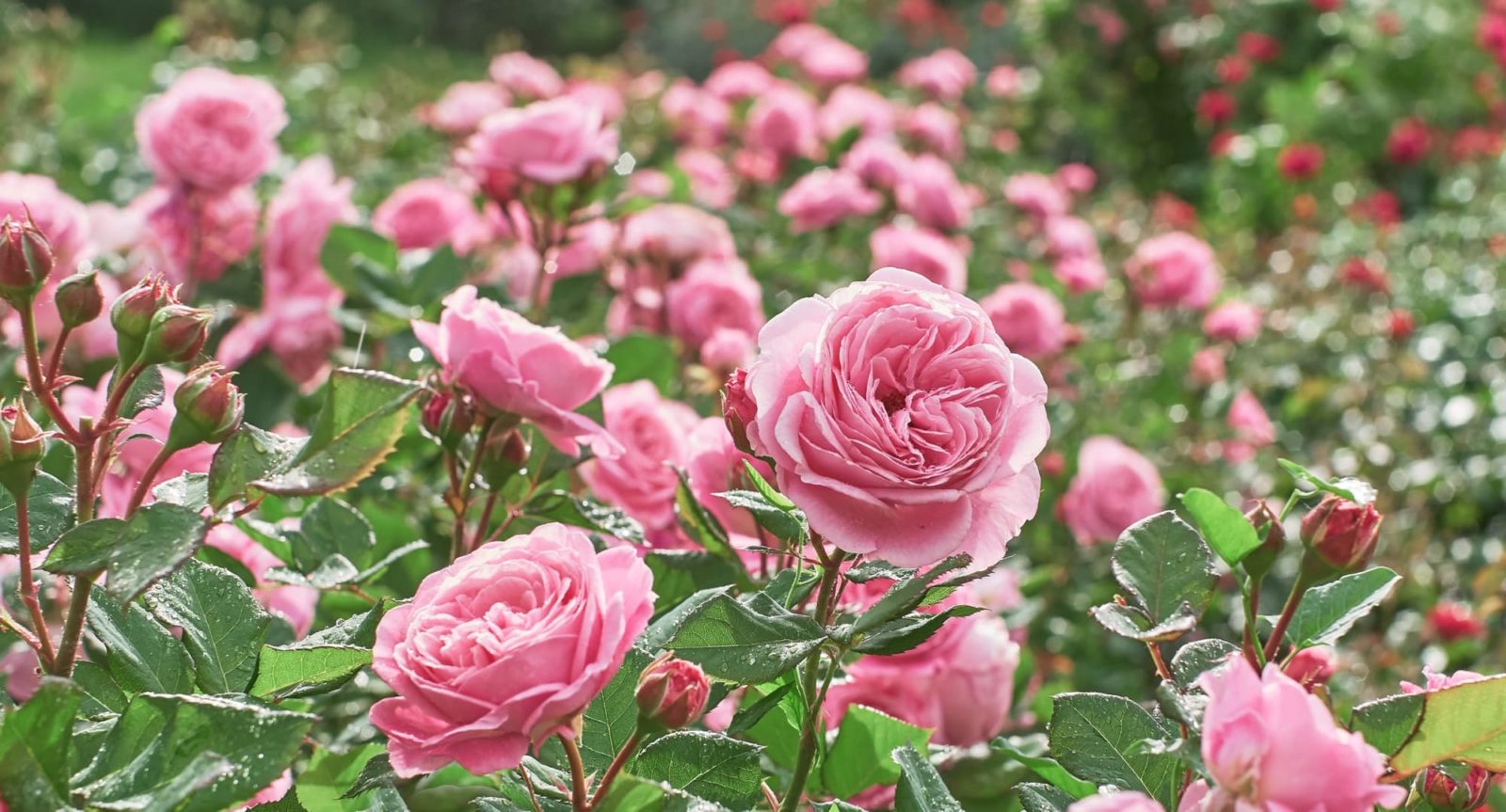
PERENNIALS > ROSES

Elizabeth is a Permaculture Garden Designer, Sustainability Consultant and Professional Writer, working as an advocate for positive change. She graduated from the University of St. Andrews with an MA in English and Philosophy and obtained a Diploma in Applied Permaculture Design from the Permaculture Association.
Reviewed By COLIN SKELLY

Colin is a Horticulturist and Horticultural Consultant with experience in a range of practical and managerial roles across heritage, commercial and public horticulture. He holds the Royal Horticultural Society’s Master of Horticulture award and has a particular interest in horticultural ecology and naturalistic planting for habitat and climate resilience.
Contributions From PHILIP HARKNESS

With over 45 years as a Co-Owner of Harkness Roses, Philip has made a name for himself in the rose industry. His plant nursery won gold medals at the Chelsea Flower Show in 2021 and have bred various new roses, including ‘The Duke of Edinburgh’ rose, which was handed to the Late HRH Queen Elizabeth II to commemorate what would have been her late husband’s 100th birthday.

A Partner at Style Roses, Chris has worked in garden rose production for over 40 years and is the former Production & Marketing Manager for the Horticultural Department of Lincolnshire Field Products. Chris opened up his specialist nursery Style Roses in 1999 operating from Lincolnshire, specialising in standard and bush garden roses sold bare-root - and currently offers over 400 varieties of garden roses for sale.

Ben has been a professional gardener for over 20 years and is currently the nursery manager at Country Garden Roses. Country Garden Roses has been established for 35 years and is based at Black Birches in Shropshire, home to 500 different varieties of rose. The nursery has won several RHS medals, including Silver Gilt awards at the Shrewsbury Flower Show.

As the Owner of Dickson Roses, a specialist nursery, Colin bred roses from 1977-2018, marking the end of the nursery’s 140-year tradition. Despite this, Colin still won Rose UK’s Rose of the Year award in 2022 for his rose ‘It’s A Wonderful Life’ - the 8th time Dickson Roses has received that particular accolade, which is lauded by the RHS.

Stewart established Pocock’s Roses plant nursery in 1985 and has been running it ever since. Also the founder of The Cornish Rose Company, another specialist seller, he has been an exhibitor at many RHS Flower Shows, including Hampton Court and Chelsea.

David has over 40 years of experience growing and exhibiting fruit, flowers and vegetables, including for RHS Garden Harlow Carr. He is a qualified Judge and Lecturer for the RHS and is the current Vice Chairman of the RHS Fruit, Vegetable and Herb Committee. He’s also a Committee Member and Officer of a number of horticultural societies, including working as the Horticultural Advisor for the National Allotment Society.

Bunny Guinness is an award-winning Landscape Architect with more than 35 years' experience. Bunny has worked in TV & Radio sharing her extensive knowledge of all things horticulture - including as a panelist on BBC Radio 4 Gardeners' Question Time. She was awarded an Honorary Doctorate by Birmingham City University in 2009 and has designed six Gold-Medal winning gardens at RHS Chelsea Flower Shows since 1994.

What started as a blog turned into a huge project and an online shop for sisters Elaine, Caroline and Laura, who make up The 3 Growbags. They frequently document their journey and have made appearances at several RHS shows. All three are full members of the Garden Media Guild.
IN THIS GUIDE
Roses are a favourite with many gardeners and for very good reason.
“I couldn’t live without my roses – a cop-out, of course, because there are so many kinds, but it’s the species that has given me the most joy over the last 50 years,” shares Elaine from The 3 Growbags.
Throughout our guides to roses, you will find advice from SIX outstanding experts in the industry, each of whom we interviewed individually:
- Philip Harkness – Co-Owner of Harkness Roses.
- Chris Styles – Partner at Style Roses.
- Ben Stirton – Nursery Manager at Country Garden Roses.
- Colin Dickson – Owner of Dickson Roses.
- Stewart Pocock – Owner of Pocock’s Roses.
- David Allison – Vice Chairman of the RHS Fruit, Vegetable and Herb Committee.
“The rose is an exciting plant,” says Philip.
“It is a species that has developed over millennia in the wild and we have harnessed the diversity, adaptability and beauty of the rose by hybridising new strains and varieties.”
These adaptable climbers and shrubs work well in many different gardens and fit in extremely well in many British gardens of many different styles.
“No other flowering garden plant delivers so many blooms over the summer and into late autumn and lasts for so many years,” adds Chris.
“Of course, there’s also the great and differing fragrance you get from so many of them.”
Overview
| Botanical Name | Rosa |
| Common Name(s) | Rose |
| Plant Type | Perennial / Shrub / Climber |
| Native Area | Asia, Europe, North American, Northwest Africa |
| Hardiness Rating | H6 (can vary between species) |
| Foliage | Deciduous or semi-evergreen |
| Flowers | Large, often fragrant flowers in a range of colours and forms, often followed by hips |
| When To Plant | November to March (bare root) |
Sunlight
Preferred
Full Sun or Partial Shade
Exposure
Sheltered or Exposed
Size
Height
Varies
Spread
Varies
Bloom Time
Summer / Autumn / Winter
Soil
Preferred
Most fertile soils
Moisture
Moist but well-drained
pH
Any
Roses are woody perennial flowering plants in the Rosa genus, in the Rosaceae plant family.1Sytsma, K. (2023, March 10). Rosaceae | plant family. Encyclopedia Britannica. Retrieved March 20, 2023, from https://www.britannica.com/plant/Rosaceae
There are over three hundred different species of rose and literally thousands of cultivars that have been grown and developed over time.2Roses – Rosa. (n.d.). Kew Royal Botanic Gardens. Retrieved March 20, 2023, from https://www.kew.org/plants/roses
“Roses are incredible at this time of year (in the summer),” shares Bunny Guinness, a Landscape Architect.
“‘James L Austin’ is probably my favourite variety at the moment. It has these lovely purple-magenta flowers that just go on and on. It’s a lovely bushy variety.”
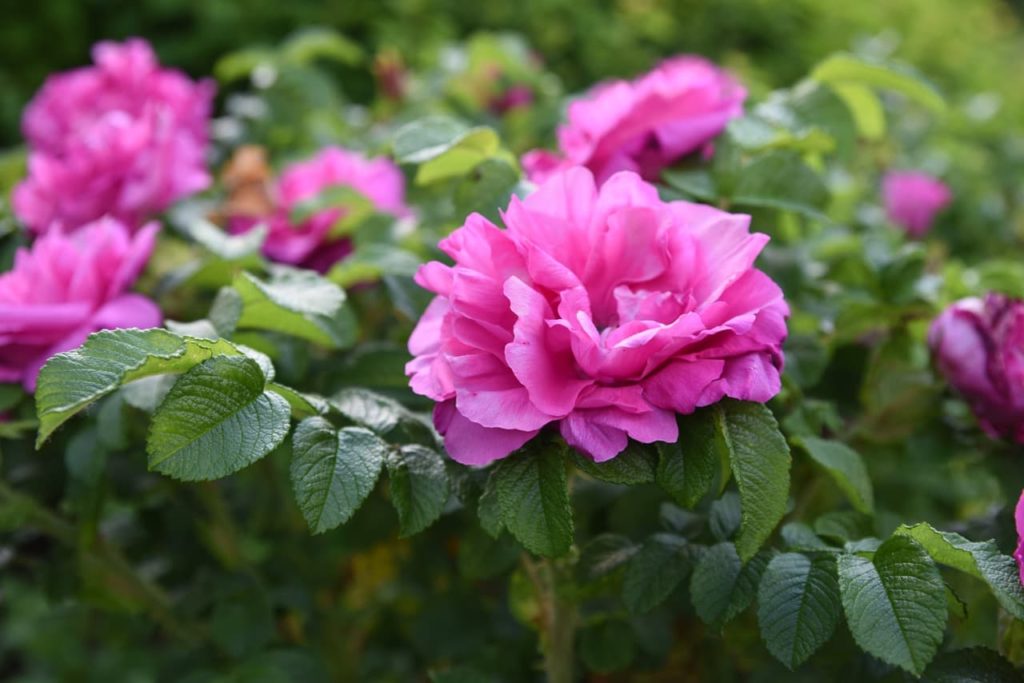
There are two species of wild rose native to the UK – R. rugosa and R. canina.
Numerous different garden roses descended and hybridised from both native and non-native species and are now grown in gardens throughout the British Isles.
Common Types
There are so many different roses to consider growing that it can be helpful to narrow down your choices to a particular type.
“My favourite rose to grow varies with my mood,” explains Philip.
“There is so much beauty in so many different roses and there is such diversity in the genus that there is the perfect variety for almost every situation.
“I think my favourite is the next one that I see. There is beauty in all of them.”
You might consider:
- Climbing roses
- Rambling roses
- Shrub roses
- Hybrid Tea and Floribunda roses
- Patio and Miniature roses
- Ground-cover roses
Understanding these different types, and their preferences and characteristics can help you find the right options for your garden.
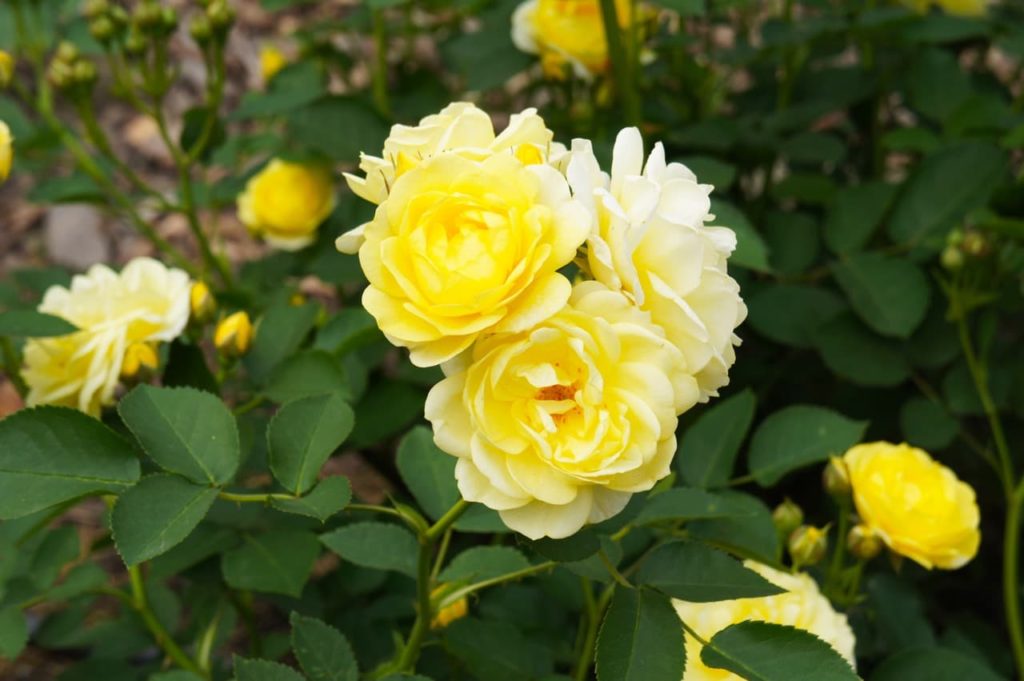
“I personally like growing climbing roses, though if you ask anyone else in the nursery they will all have their own favourites,” says Ben.
“Climbing roses take up a relatively small amount of bed space, but with careful pruning and regular deadheading, you can achieve an amazing display of flowers over structures or up walls.
“Some of the best are highly scented and are bee friendly too.”
The type you choose will also dictate pruning and other important elements of their care.
“Hybrid Tea & Floribunda Roses are easy to look after and, if pruned hard each winter, grow back to manageable heights of around 1-1.2m and produce wonderful displays of repeat flowering large long-lasting double flowers,” Chris Styles adds.
“Many will produce over 100 blooms when in the main flush and they work really well planted together en masse in large rose beds or when grown as container plants.”
How To Grow Roses
If you would like to grow roses another major decision is to consider where those roses will thrive.
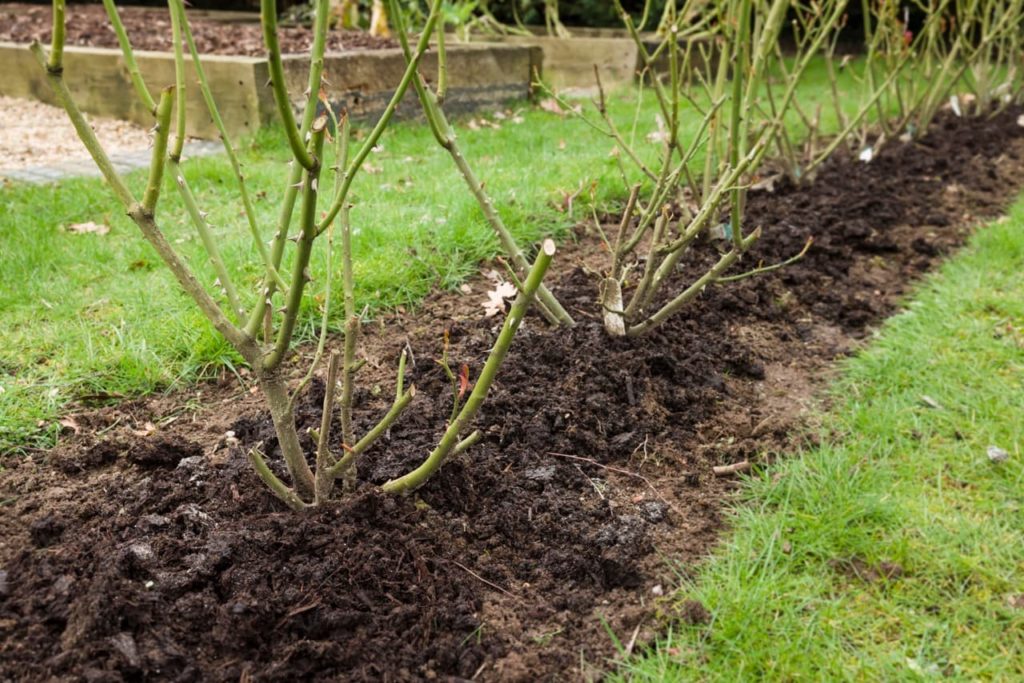
Understanding hardiness, sunlight requirements and preferred soil & drainage are absolutely crucial in choosing the right roses and the right location in which to grow them.
Hardiness
Most roses are H6 hardy, which means that they are perfectly able to withstand winter temperatures across the whole of the British Isles, even during more severe winter conditions.
Preferred Aspect
Most roses will flower best when they receive at least 4 hours of sunlight each day, meaning that they will not do very well if they are in an extremely shady spot in the garden with a north-facing aspect.
Roses can be grown in sites with a south, east or west-facing aspect.
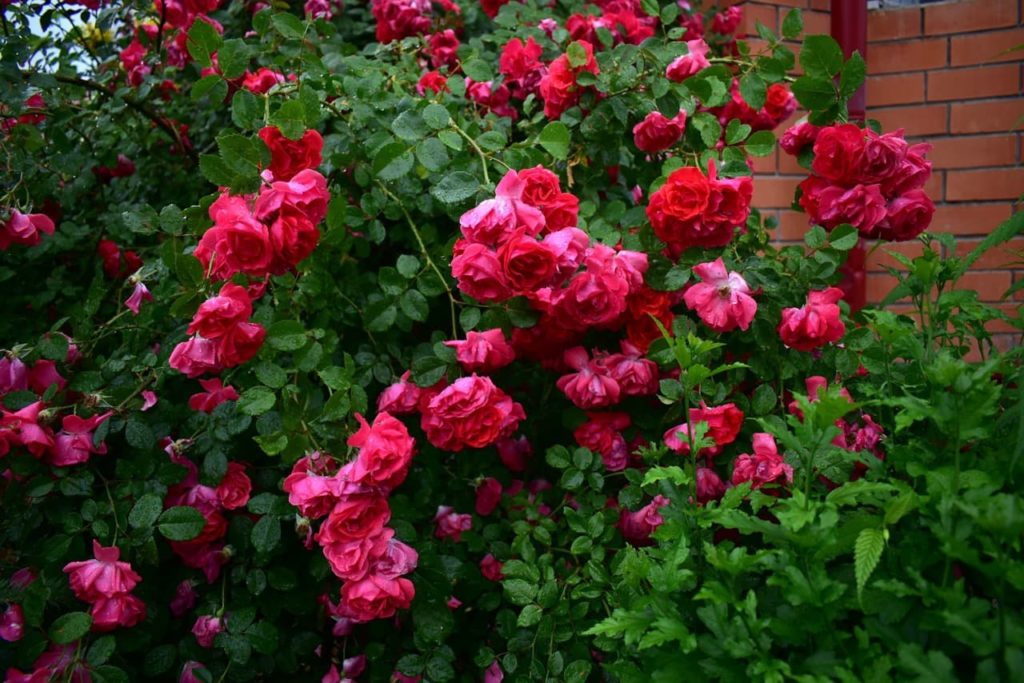
Some roses will thrive in the sunniest south-facing positions, while others will do better with at least some light or dappled shade.
It is important to think about the characteristics of specific roses when deciding exactly where to place them.
When looking for a suitable spot, it is best to avoid extremely windy or exposed locations, though some roses can certainly withstand fairly exposed conditions.
Preferred Soil & Drainage
Roses are not fussy about soil type or pH, but they do require soil that is reasonably free-draining, does not dry out entirely and remains moist over the summer months.
“Use a soil-based compost such as John Innes no. 3 and lighten it up with a little multi-purpose compost,” says Stewart, when discussing what compost to use for potted roses.
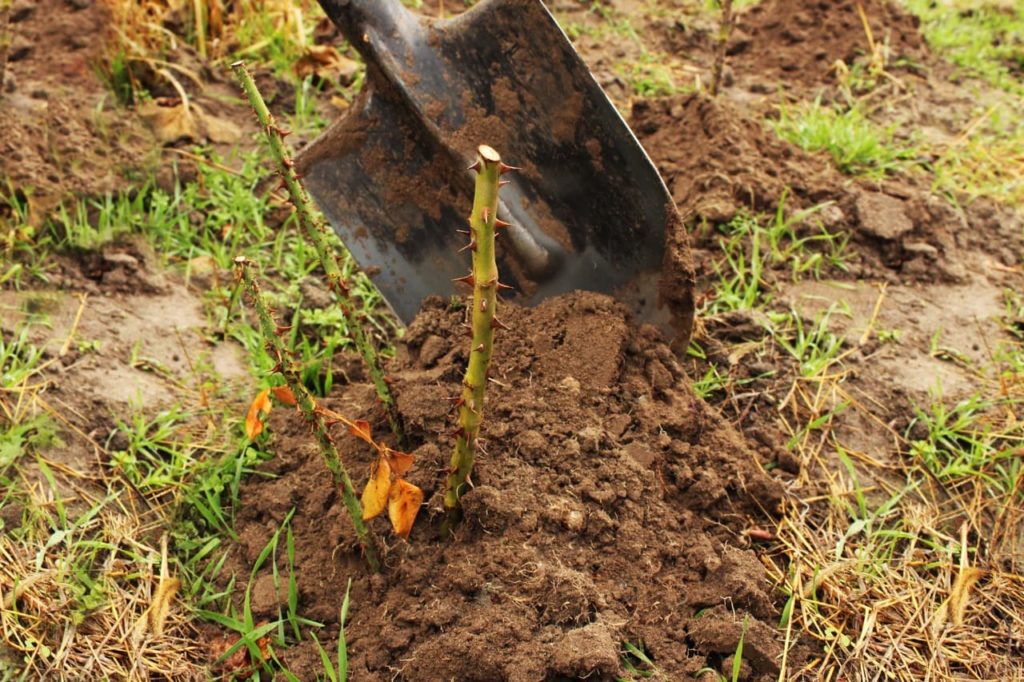
It is especially important to make sure that the soil is rich, fertile and contains plenty of organic matter in order to give a newly planted rose the best chance of successful establishment.
Prepare the site by adding plenty of homemade compost or well-rotted manure to the area.
“Ground preparation before planting is key,” shares David Allison.
“Remove any trace of perennial weed roots and add lots of organic matter, as roses prefer a rich, moisture-retentive but well-drained soil.
“Also, give them plenty of space to allow good airflow to avoid a build-up of diseases.”
Planting Out Your Roses
Once you have selected and prepared a suitable spot to plant your new rose, the process of planting the rose is relatively simple.
However, it is important to plant roses carefully as a lack of care can lead to small mistakes that might result in the slow establishment of your new rose shrub.
Dig a planting hole deep enough to accommodate the roots of the rose you have chosen that is at least 2 times as wide.
In some cases, adding a mycorrhizal additive to the planting hole upon planting may be beneficial, though in some areas the beneficial collaboration between rose roots and fungi may occur naturally without the need for human additions.3Mycorrhizal fungi. (n.d.). Royal Horticultural Society. Retrieved March 20, 2023, from https://www.rhs.org.uk/biodiversity/mycorrhizal-fungi
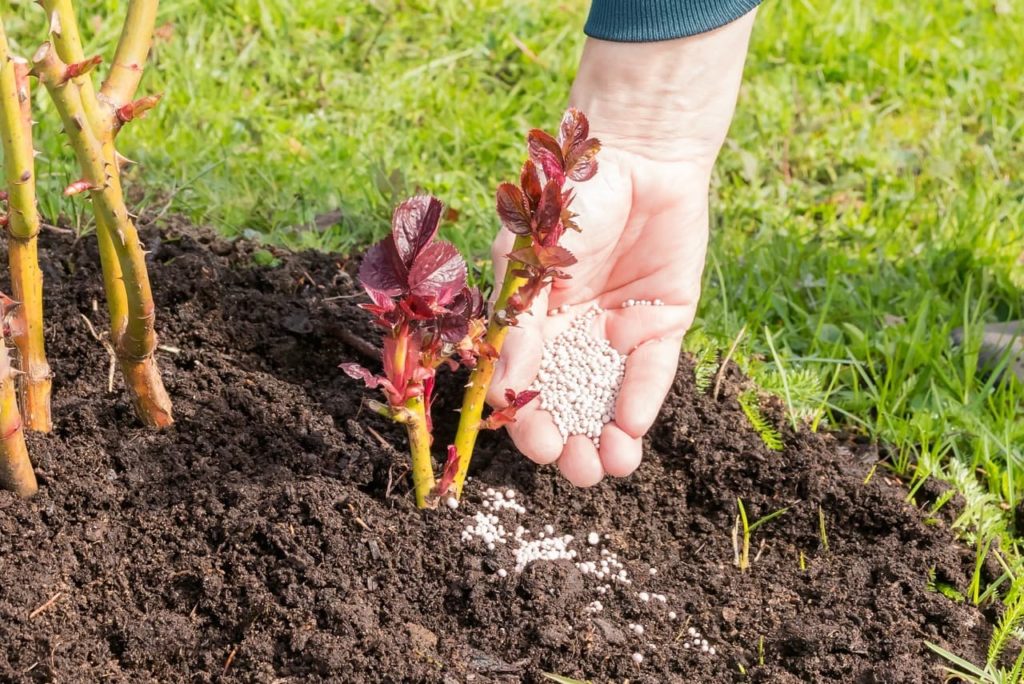
Place the rose into the hole, teasing out the roots and spreading them out as evenly as possible around the base of the plant.
It is especially important to make sure that you tease out the roots of pot-grown plants as these may otherwise fail to spread their roots as quickly or effectively and may, therefore, find it harder to find enough water in the summer heat.
It is absolutely crucial to check that the graft union on your rose is at and not below the soil level.
The graft union is where the rootstock is joined to the scion cultivar.

Placing the graft union below the soil is said to increase the incidence of rose dieback.
Once the rose is in position, firm the soil back around the plant, making sure that there are no air pockets around the roots.
“Ensure the plants are well firmed in after planting so that the plant’s delicate feeding root hairs are not broken by wind damage,” says David.
Water the rose in deeply and well, making sure that excess water can drain away freely, then add a layer of organic mulch around the new rose to give in the best possible start.
The organic mulch will add slow-release fertility, conserve moisture in the soil and help to suppress weed growth.
Ongoing Care For Roses
Roses in the right positions in the first place will be relatively easy to care for over time, especially once they are well established in their growing positions.
“Look after your plants, examine them regularly, prune out dead flowers, feed as needed, mulch annually and rectify any issues or evidence of pests and diseases, prune out dead flowers, and you will enjoy your roses for many years to come!” says David.
Watering
Roses will require more watering during their first summer as they become established than they will tend to do once fully established and mature.
“Ensure your rose plants never go short of water, especially the first year after planting, until they get established,” says David.
They will also, of course, need to be watered more frequently when growing in pots or other containers rather than in the ground.
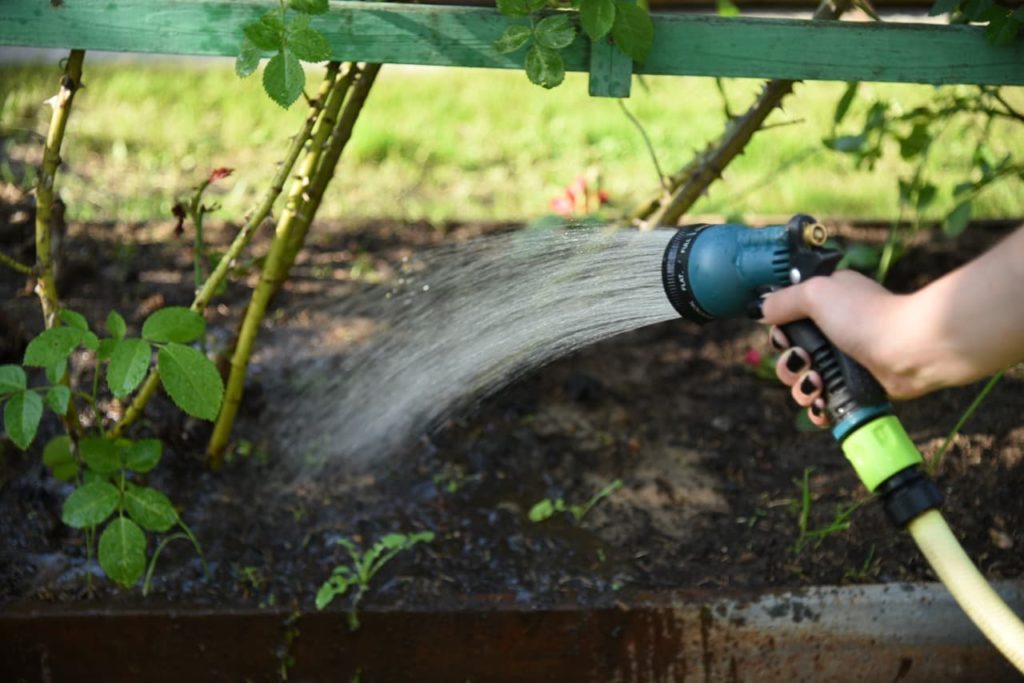
Once roses are well established in most British gardens, roses in the ground will not usually require additional watering except during extreme heat waves and dry spells.
When watering is required, make sure that you water deeply around once a week for plants in the ground and daily when roses are in containers, rather than little and often.
Deep watering encourages roses to develop deeper roots and become more resilient, meaning that they will be able to cope better during dry spells in future.
Overwintering
Roses are usually H6 hardy so will not require any special winter care.
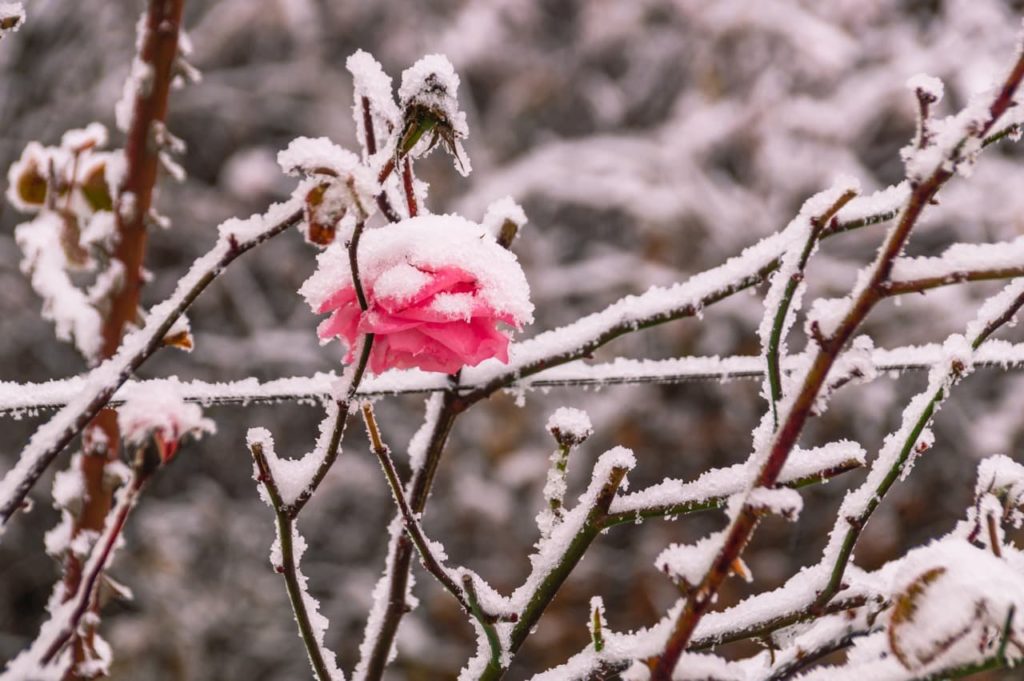
They can happily survive in your garden over the coldest part of the year.
Most are deciduous, but some are semi-evergreen and can hang on to some or all of their leaves throughout the year.
Companion Planting
One other important thing to think about when choosing where to grow roses is what you will grow alongside them.
Fortunately, roses make great companions for a huge range of other flowering plants and bring in pollinators to benefit many other plants close by.
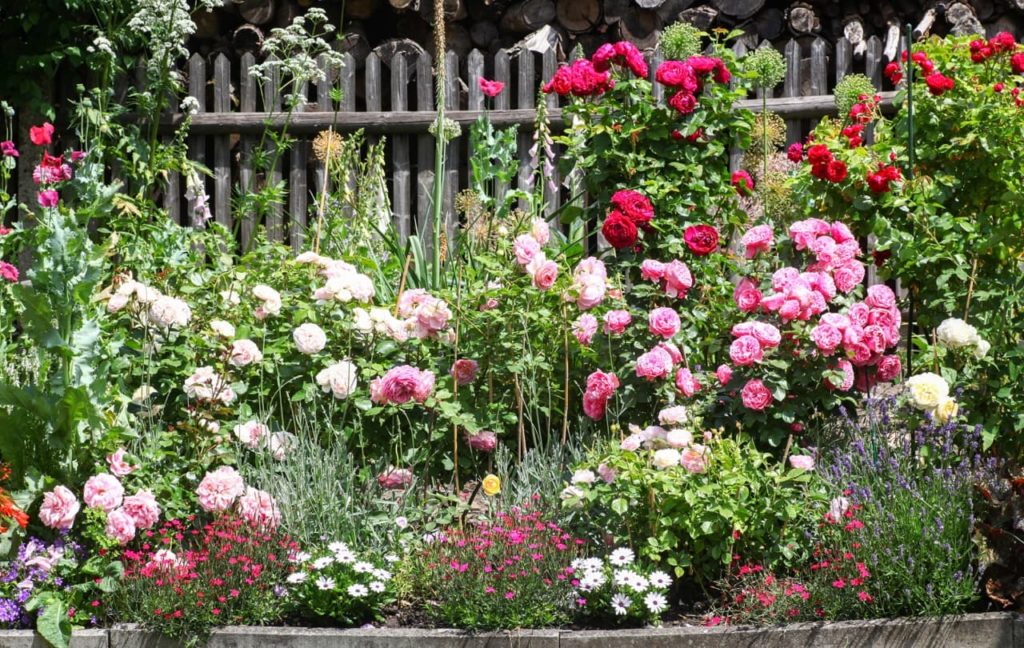
“Grow salvias near your roses,” says Gardener Designer Manoj Maldé.
“The sulphur in the scent of salvias means that when they warm up, they release a natural fungicide which helps to keep roses healthy, and mildew and blackspot free.”
Other great companions for roses are too numerous to name in this guide, but it is great to experiment with native perennials that bloom just before, at the same time as or just after roses as companions, to increase the visual appeal and nectar for pollinators in your garden.
Cutting Back
“Never be afraid to prune your roses, as you won’t ruin the plant,” Philip says.
“Many of the newer varieties make some of the old pruning rules obsolete.
“Modern garden roses are bred to be productive, making many stems and flowers.
“In the olden days, when growth was less vigorous, you were advised to ‘prune to an outward facing eye’, as that one eye would grow and dominate.
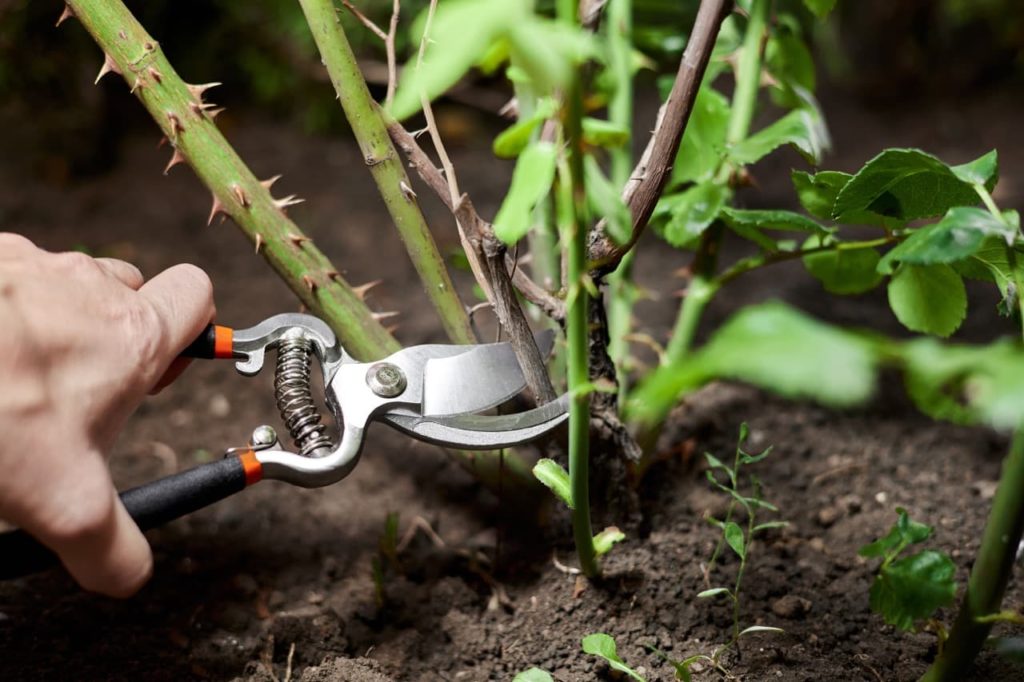
“Modern bushes will produce multiple stems, so this old requirement is pretty much redundant now.”
When pruning, Colin Dickson emphasises the importance of cutting back any dead or damaged stems.
“I’d recommend pruning at the beginning of March,” adds Ben Stirton.
“Ramblers are an exception to this rule and they should be pruned directly after flowering, as they flower on the new growth from the previous year.”
Issues
Many common problems experienced by those growing roses are related to environmental issues or issues with basic care.
Unfortunately, roses can also sometimes encounter a range of pest and disease problems.
“Diseases like rust, powdery mildew & black spot are common on many roses, especially older varieties,” Chris explains.
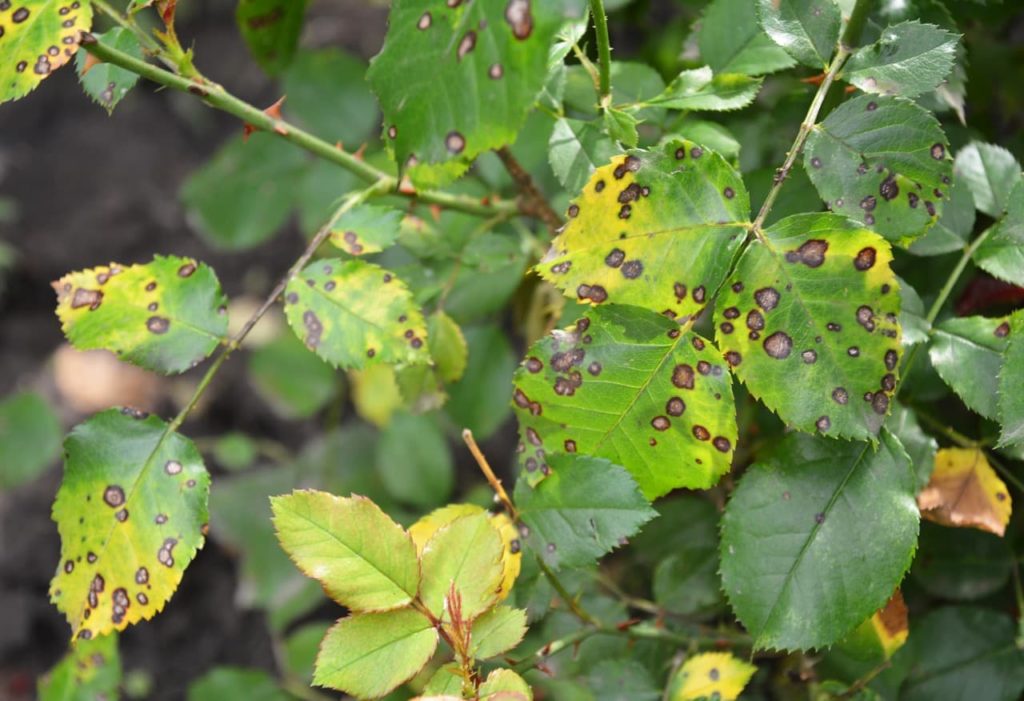
Aphids, flower balling, rose dieback, rose leaf and rose sawfly are just some of the other most common rose problems.
“A regular spraying programme of a systemic insecticide or whatever control measure you feel comfortable with is key to combat pest issues,” David shares.
“Rose sickness is a soil problem that can be an issue and is most commonly found when the same beds are used to replace plants with new stock,” he adds.
“If you have to use the same beds and rotation is not an option, fungicides will need to be used.”
References
- 1Sytsma, K. (2023, March 10). Rosaceae | plant family. Encyclopedia Britannica. Retrieved March 20, 2023, from https://www.britannica.com/plant/Rosaceae
- 2Roses – Rosa. (n.d.). Kew Royal Botanic Gardens. Retrieved March 20, 2023, from https://www.kew.org/plants/roses
- 3Mycorrhizal fungi. (n.d.). Royal Horticultural Society. Retrieved March 20, 2023, from https://www.rhs.org.uk/biodiversity/mycorrhizal-fungi

